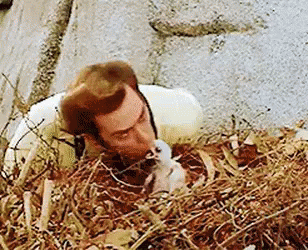I was taking a macro shot of a pretty flower when the bird flew in and perched on a branch above me. I didn't want to scare it off, so I remained still while raising my camera to take a few snapshots. It just stood there and barely moved. I then put away my camera and pulling out my phone, I recorded the video accompanying this post. The bird seemed to be habituated to humans. Not far from where I was, there was a dock on the lake that was full of birds like ducks, blackbirds, geese, and sparrows. People were feeding them seeds, so I figured that was likely the reason this particular bird did not seem to be spooked by my being there.
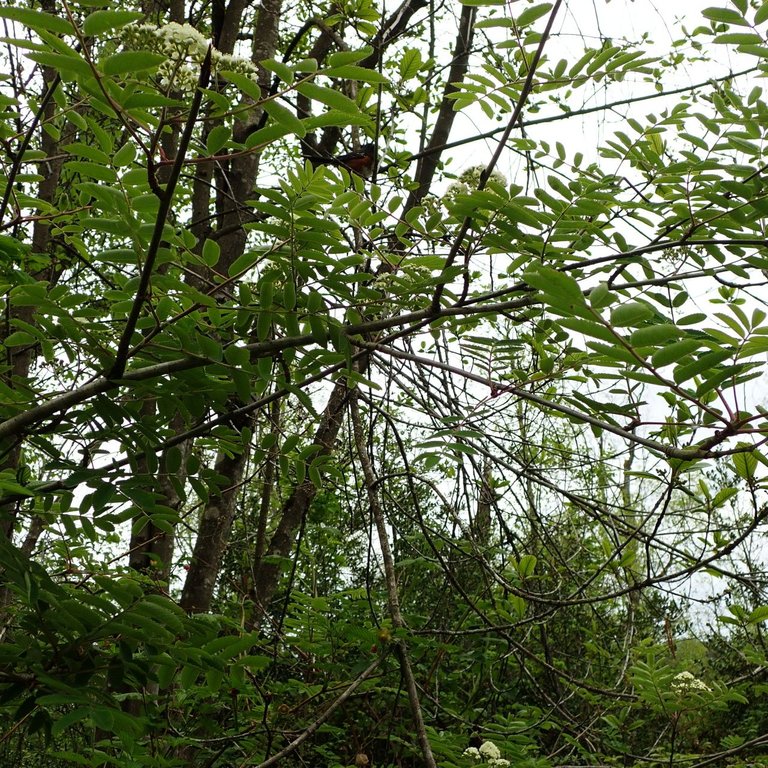
I hadn't the faintest idea what kind of bird it was, but later I saw an info-graphic that led me to believe the bird was a Dark-eyed Junco because of the white outer tail feather and reddish flanks.
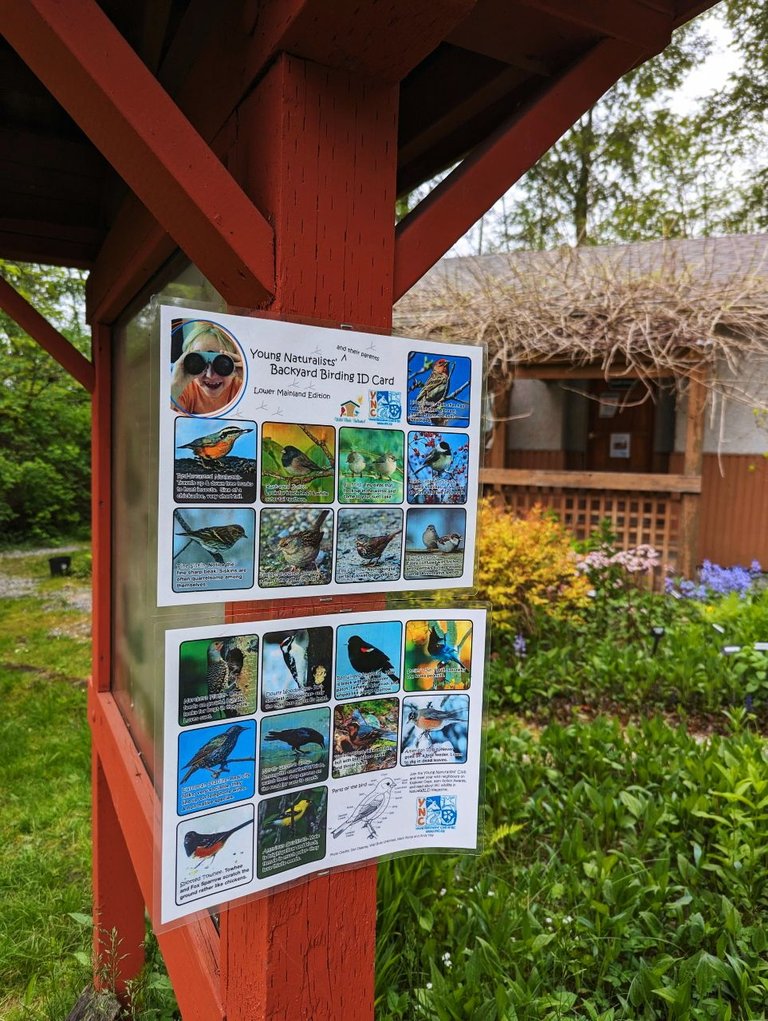
When I returned home, I took a closer look at the info-graphic and realized it was actually a Spotted Towhee, as can be determined by the spots on its wing feathers. These spots are the distinguishing features that separate it from its eastern cousin. Other characteristics include the black hood, long tail, red eyes, and white underpants (Bird, 2016).
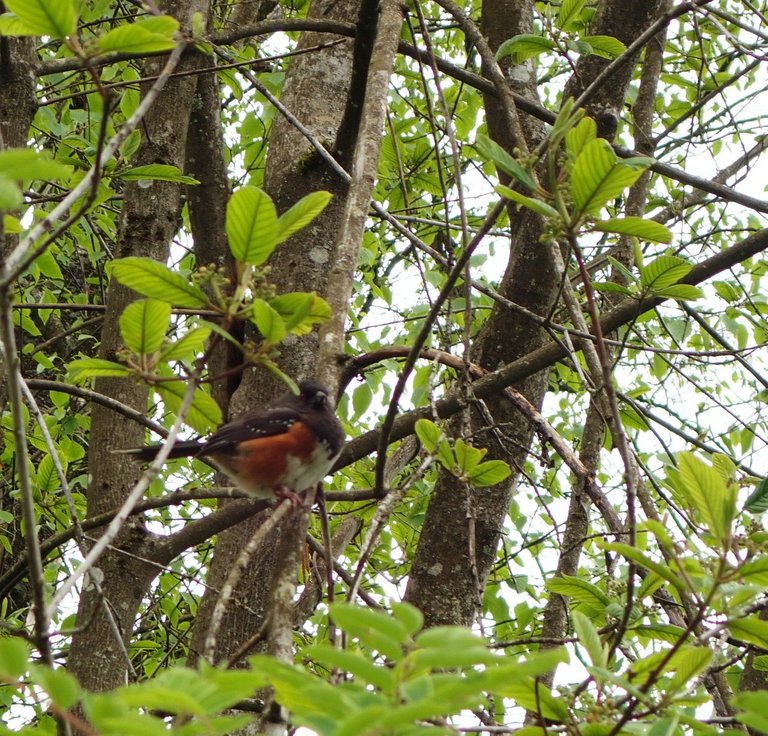
During May through August, the Spotted Towhee lays two broods of 3-5 eggs on ground nests hidden in the thicket. It forages on or near the ground for insects, fruit, buds, and seeds. It lives in dense woodland, forest edges, shrubbery, and "disturbed" forests. Its wingspan is approximately 10.5 inches.
(From the Pocket Birds of Canada by Bird, 2016)
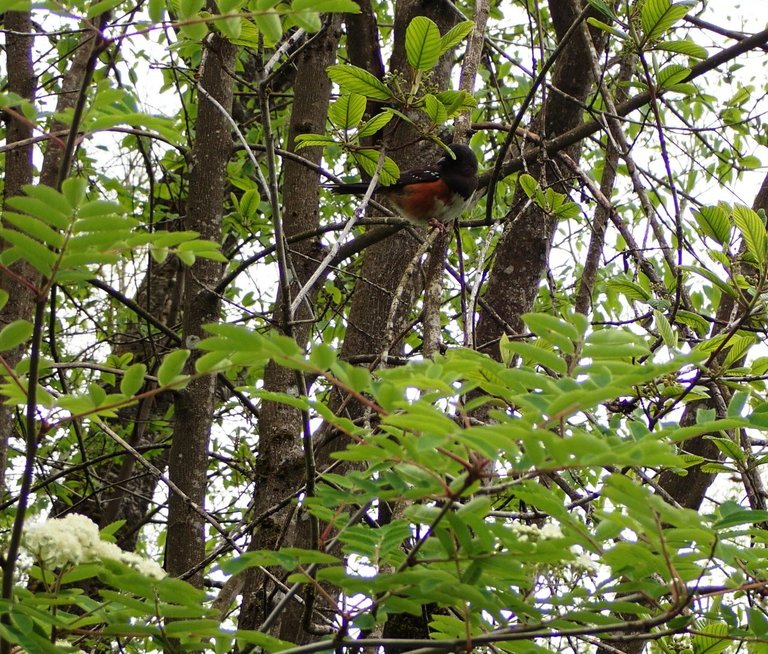
The bird looked a little chubby to me, so it was rather well fed. Still, I think it must've been disappointed when I left without giving it any seeds. It was still on the branch as I made my way down the trail.
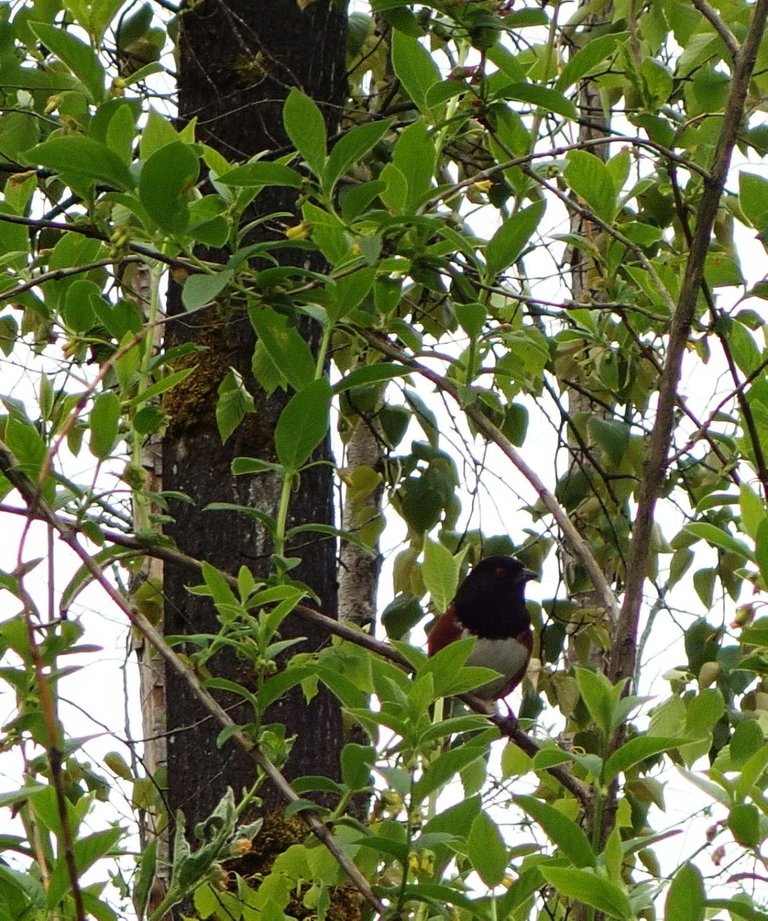
Images by @litguru
Twitter
Instagram
NFT Showroom Gallery
InLeo Threads
▶️ 3Speak
